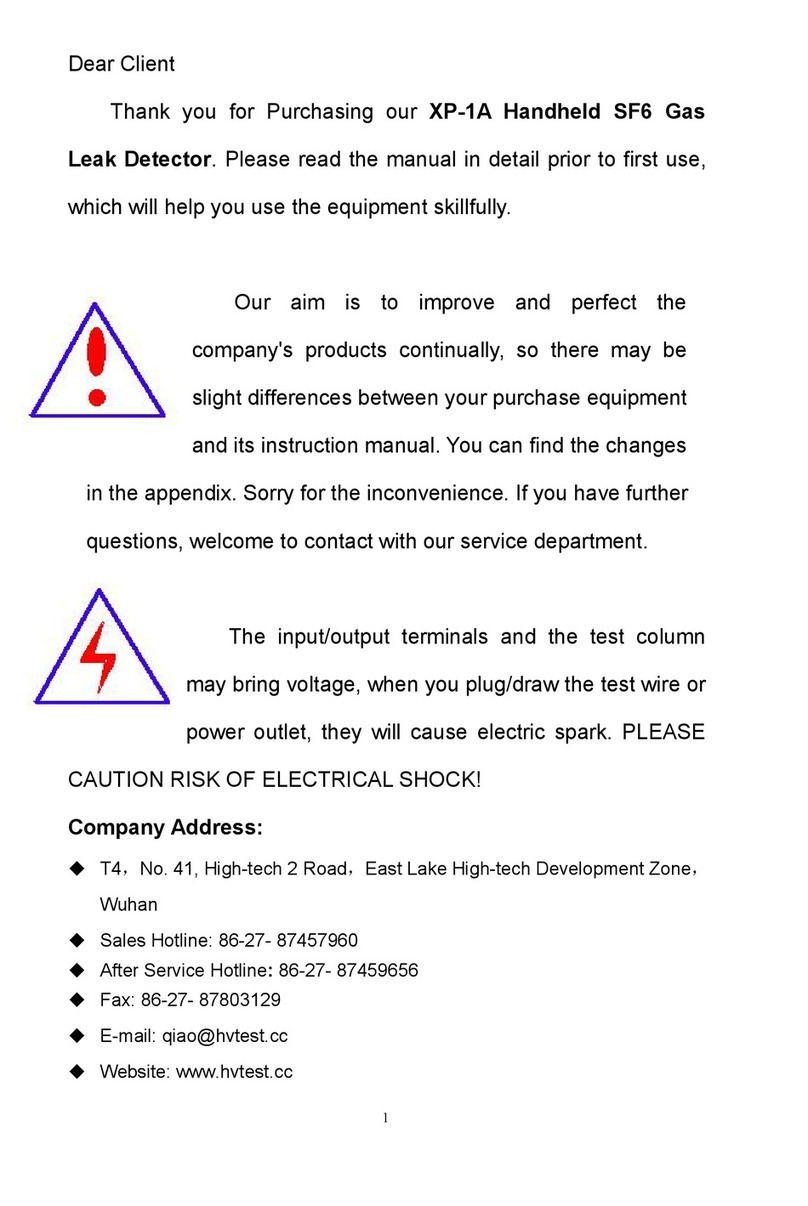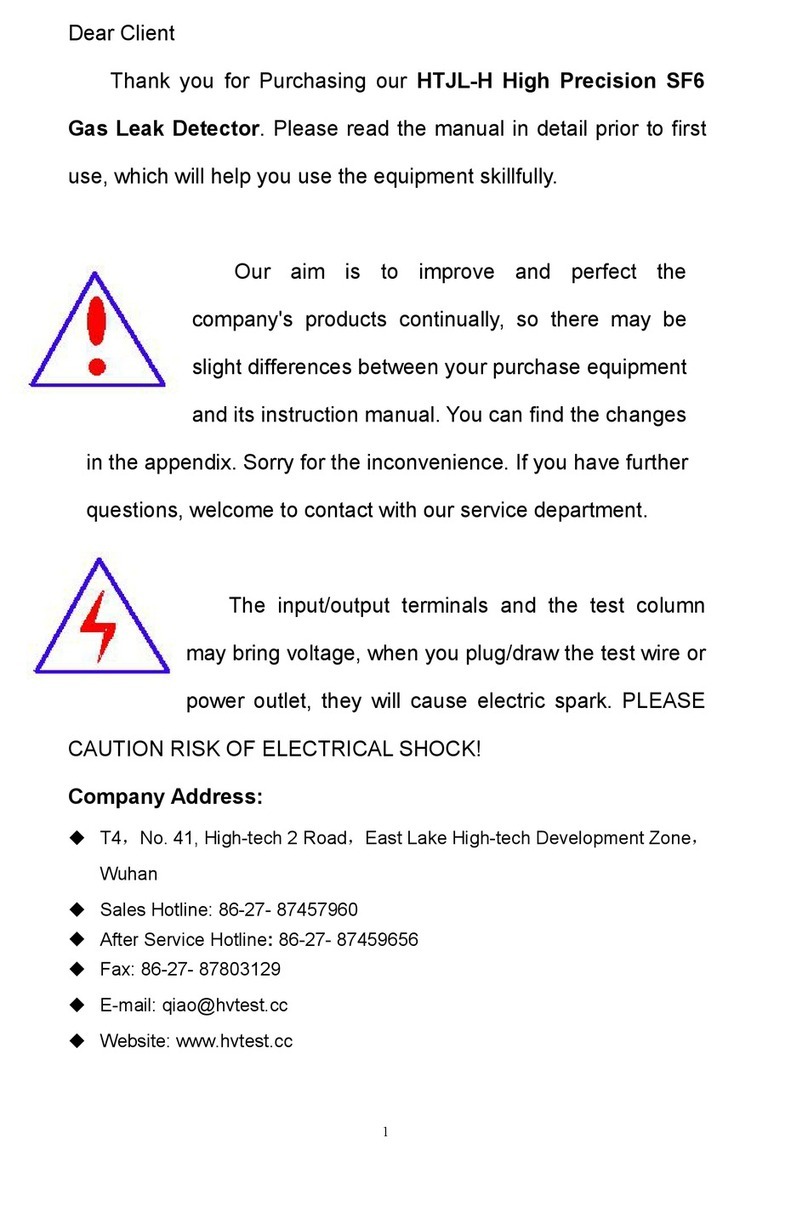
1.2 Relative Standards
The standards of this device are formed by quoting relative articles of the following
standards, which formulate the technical requirements, regulations of inspection,
method of measurement, applicable range, packing requirement, label, transport and
storage of this device.
1. Regulations on device performance, testing and personal protection of Electric
equipment DL/T 639-1997;
2. Testing method of encapsulation test for SF6 of high pressure switch GB11023-89;
3. SF6 Gas Leak Detector DLT846.6-2004;
4. Measures for the Administration of Quality Supervision on High Pressure Switch
[1999], attachment No.72 of National Electricity Co.
5. EMC Test and Measuring Technique GB/T 17626;
6. Environmental Test for Electric and Electronic Products GB/T 2423;
7. Specifications for Preventive Test for Electric Devices DL/T596;
8. Labels of Transport Package Shipping Mark GB/T 6388.
II Function Overview
Along with the gradual rise of the voltage level of national transformer stations, the
usage of SF6 High voltage circuit breakers has been increasing by about 15% each
year. In the field of high pressure, extra-high pressure and ultra-high pressure switches,
SF6 has become the only insulating and arc extinguishing medium. Yet SF6 high
pressure switches are commonly installed indoor where the air motion is relatively slow,
so once a gas leak of SF6 occurs, it usually causes local oxygen deficit, which
asphyxiates working personnel and puts their lives in great danger. Furthermore, it
greatly reduces the arc extinguishing effects on high pressure control breakers, which
would damage the breakers themselves. So once a SF6 gas leak is discovered, relative
measures must be taken and the leaking point must be found and restored to eliminate
the potential safety hazard to the high pressure control breakers.
HTJL-V High Precision SF6 Gas Leak Detectorr can not only run optical alarms
according to the concentration thresholds set by customers, but it can also accurately
find leaking points of SF6 and apply quantitative detection on the leaking quantity,
annual leaking rate of SF6 control breakers and GIS in a variety ways such as observing
the trend of data change, which brings great convenience in SF6 device maintenance.




























